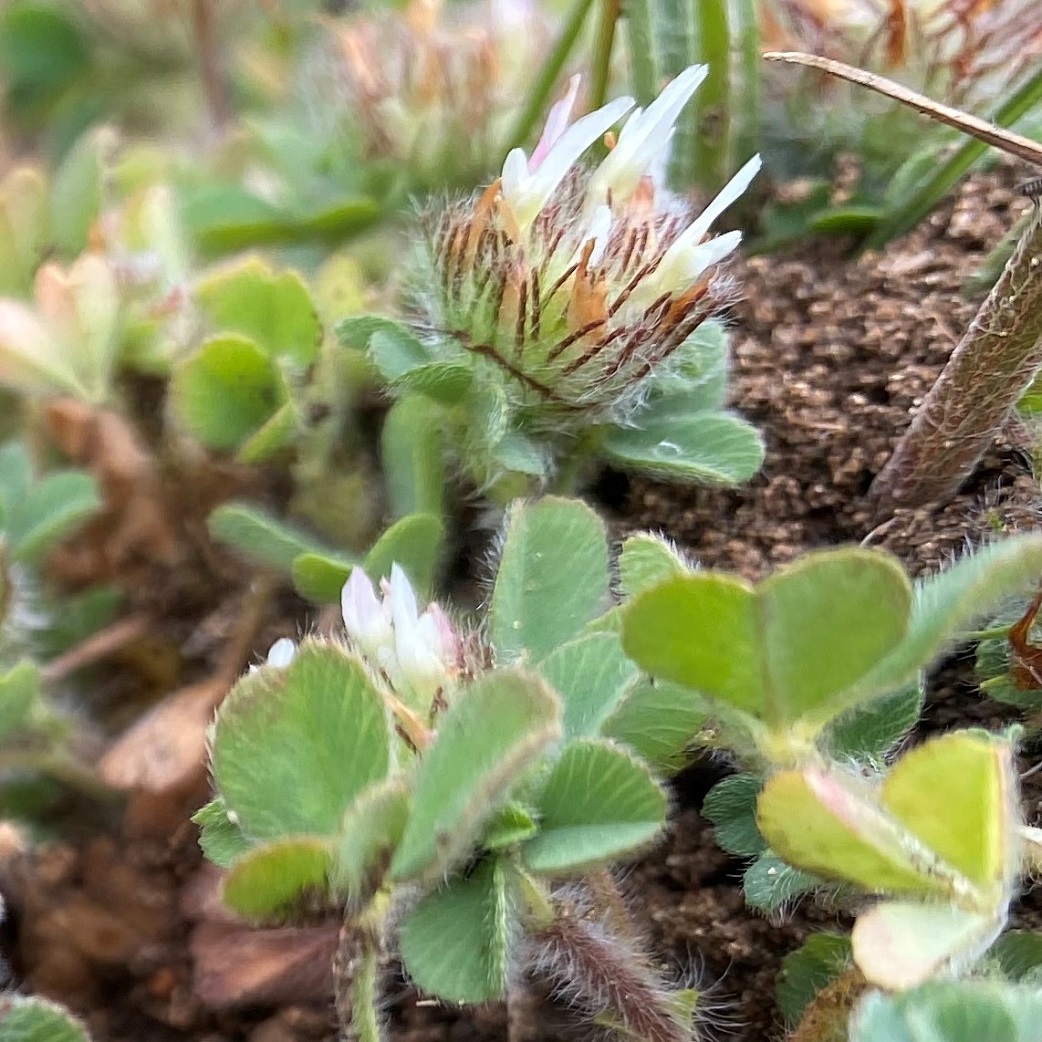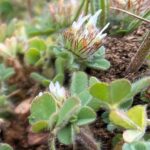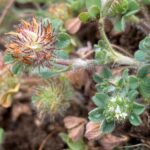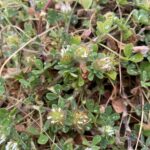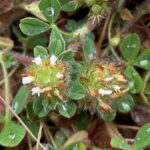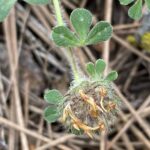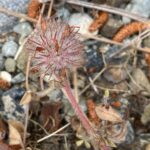Τριφύλλι του τσέρλερ
Etymology of Trifolium cherleri
The name of the genus, "Trifolium" derives from the Ancient Greek "τρία" [tria], meaning "three" and the Latin "folium", which means "leaf", hence "three-leafed", referring to the three leaflets that comprise a leaf. This word is a calque of the Ancient Greek "τρίφυλλο" [trifyllo], which actually means the same thing. The species' name, "cherleri", is a tribute to Jean Henri Cherler (1570-1610), Swiss physician and botanist, professor at the Academy in Nîmes (it is quite possible that he was the one who recorded it first).
Trifoliums in Cyprus
Around 35 Trifolium taxa (species and subspecies) have been identified in the wild Cypriot habitat so far.
Trifolium cherleri in Cyprus
Trifolium cherleri, commonly known as Cherler's Clover or Cupped Clover, is a fairly uncommon annual plant found throughout Cyprus, ranging in altitude from sea level up to about 1225 meters. It thrives in low grasslands across the island. Its flowering period in Cyprus typically extends from March to May, during the spring months.
The species is native to the Mediterranean region, including Cyprus, and its presence is well-established in the local flora. It is characterized by its terminal or pseudo-terminal flower heads, which are subtended by a distinctive involucre of enlarged, often somewhat rounded stipule-bracts. These bracts can give the flower head a cupped appearance, hence one of its common names. The plant itself is generally an annual therophyte, completing its life cycle within a single year.
How to identify Trifolium cherleri
Trifolium cherleri looks similar to Trifolium pilulare, especially when their flowers disappear. Here are some key differences:
General key differences
Trifolium cherleri, often called Cherler's Clover or Cupped Clover, is characterized by its terminal (or pseudo-terminal) flower heads, which are subtended by an involucre of enlarged stipule-bracts. These stipule-bracts are typically suborbicular or broadly ovate and have a short acumen (a tapering point). The calyx teeth of Trifolium cherleri are quite noticeable, measuring around 4 mm long. The overall habit of the plant tends to be somewhat erect.
In contrast, Trifolium pilulare, known as Pill Clover or Ball Cotton Clover, features flower heads that are usually axillary, meaning they arise from the leaf axils, and these flower heads lack a distinct involucre of enlarged stipule-bracts. A very distinguishing characteristic of Trifolium pilulare is its fruiting calyx, which becomes subglobose (almost spherical) and more or less tomentose (densely covered in short, matted hairs), giving the fruiting head a cotton-ball-like appearance. The calyx teeth of Trifolium pilulare are inconspicuous in fruit. Furthermore, the peduncle (flower stalk) is typically shorter than the subtending leaf. The plant itself can have erect, ascending, or prostrate (lying flat) stems.
Dead fruit
The dead fruit of Trifolium cherleri retains the characteristic involucre of enlarged stipule-bracts that subtended the flower head. These bracts, though likely dried and papery, persist as a collar-like structure around the remains of the seed head. Additionally, the relatively long and pointed calyx teeth, prominent during flowering, also remain visible on the dried fruit, often protruding from the papery calyx. The overall appearance is a dry cluster of former florets surrounded by the persistent bracts and bearing these noticeable, dried calyx teeth, lacking a particularly woolly texture. The individual dried florets would likely remain somewhat contained within the dried calyx.
In contrast, the dead fruit of Trifolium pilulare is most notably defined by its persistent, subglobose calyx that becomes densely tomentose, retaining its woolly or cottony texture even in a dried state. This woolliness is a key identifier and stands in stark contrast to the fruit of Trifolium cherleri. As Trifolium pilulare lacks an involucre of enlarged stipule-bracts around its flower heads, this feature is absent in the dead fruit as well. The calyx teeth, which were inconspicuous during the fruiting stage, remain small and are often obscured by the dense, matted hairs of the dried calyx, making them less prominent than those of Trifolium cherleri. The dead fruit heads of Trifolium pilulare often remain clustered in the leaf axils, reflecting their original growth pattern and presenting as small, woolly balls. The individual dried florets would be largely obscured by the densely tomentose (woolly) fruiting calyx.
